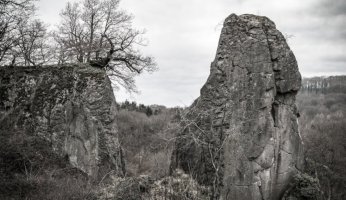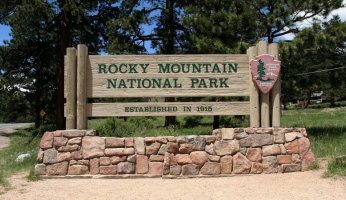The National Parks – Grand Canyon
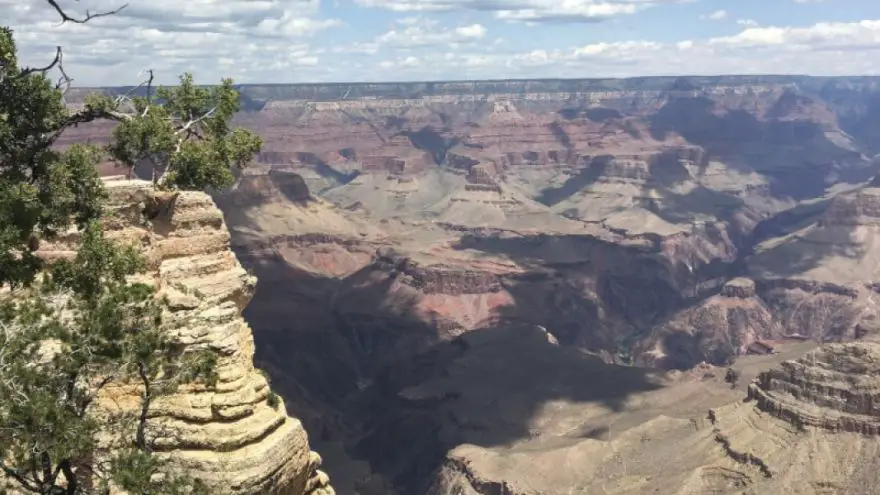 The National Parks – Grand Canyon
gearweare.net
The National Parks – Grand Canyon
gearweare.net
No other park captures the American imagination quite like the Grand Canyon. To stand on the edge on this 277 mile long, 18 mile wide, and 1 mile deep crevasse in the Earth is to see the power of nature in person. Looking down, you will see what appears to be a tiny blue line, winding along the bottom of the mighty canyon. This unassuming ribbon is the Colorado River, the body of water responsible for sculpting the intricate landscape laid out before you. Looking out, you will see massive sandstone, shale, and limestone rock formations in an incredible array of colors. These rocks expose a different time in the Earth’s history, when the land you are standing on was close to the sea. Finally, looking around you will see a plethora of flora and fauna that thrive despite the unforgiving nature of the climate. Over 2,000 plant species, as well as 1,443 invertebrates (mostly within the arachnid and insect families) and about 600 animals, call Grand Canyon National Park their home.
The epic landscape of the Grand Canyon draws all types of nature lovers to the park. The roads that travel the rims of the park have many incredible viewpoints, and make it accessible to everyone. There are also plenty of day hikes, although there really are no easy trails. Longer trips, either backpacking by foot or rafting down the Colorado River, can also be done, but should only be attempted by those with the proper know how.
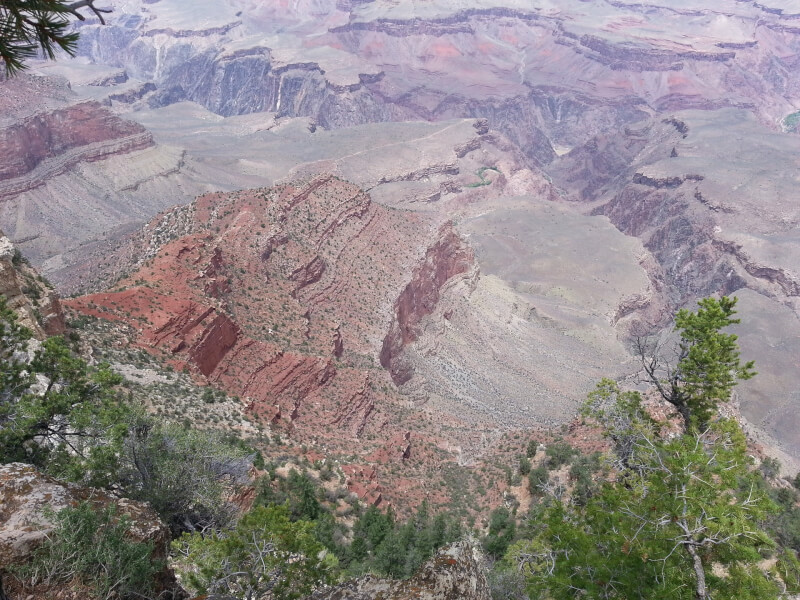
The extreme nature of adventuring here does not stop people from coming to the park in droves though. In 2017 over 6.4 million people visited the Grand Canyon, making it the second most visited national park in the country. The most popular times to visit are from March through October, with peak season being in mid-summer. Those looking for a bit more solitude in the park should try coming during the offseason, or explore one of the less popular areas of the park. Whichever kind of trip you aim to have, here you will find ideas for some of the coolest places to explore and things to do in the Grand Canyon.
Table of Contents
The South Rim
This part of the park is accessed via the South Entrance Road, which is open all year round. Along this road, you will find easy to get to vistas from the southern edge of the Grand Canyon. Many spots on the South Rim road are handicapped accessible, making this the perfect area to visit with the whole family.
The Grand Canyon Village is on South Entrance Road. Here you will find restaurants, both fast and dine in, and lodges, where you can stay the night, all with sweeping views of the Grand Canyon. This is one of the best places to go for easily accessible vistas, however it can get quite crowded. Before you get to the Village on South Entrance Road, you will also pass the Grand Canyon Visitor’s Center and the Yavapai Geology Museum, where you can learn about the history, both human and natural, of the area.
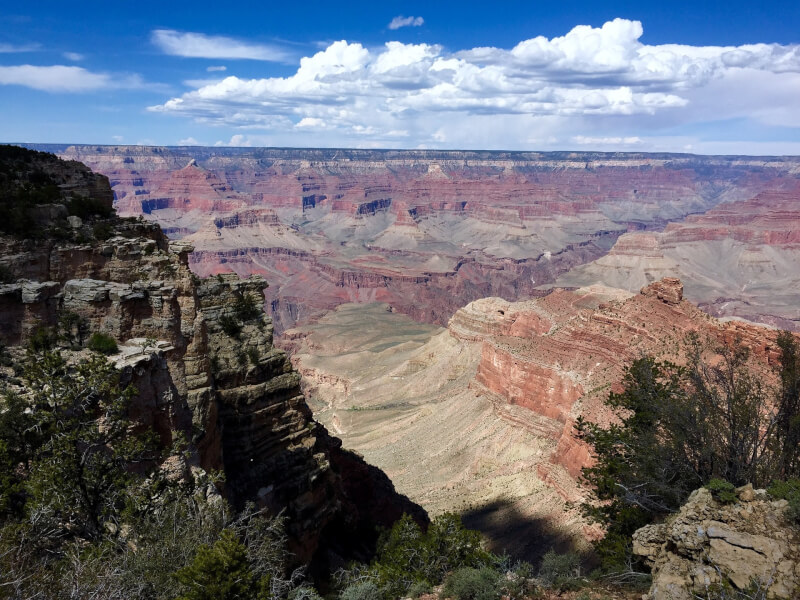
The best day hike on the South Rim is the Rim Trail. This relatively flat trail that wends its way for thirteen miles along the South Rim. It can be reached at multiple points, some of which have parking lots where you can leave your car. There are many spots where this trail can be reached by shuttle bus. Leave your car at one end of the Rim Trail, then take the bus back so you don’t have to walk both ways.
The South Rim is also a notable spot in this park because of the access to other areas that can be found here. For example, Hermit Road, a seven-mile scenic road, can be reached from Grand Canyon Village. This road is only open to private vehicles during the off-season months of December, January, and February. During the rest of the year the road can be walked, biked, or ridden via shuttle bus.
Day hiking and backcountry trails can also be reached along the South Rim.
The North Rim
Only 10% of the millions of people who go to the Grand Canyon each year visit the North Rim, making this side of the canyon perfect for those who crave solitude. Like the South Rim, comforts such as a lodge and restaurants can be found here, but everything closes from mid-October until mid-May. There is a campground the stays open until the end October, and this part of the park remains accessible for day use until December 1st (sooner if the snows make the roads impassable). However, available amenities are quite limited during this time.

With far fewer people sharing your space, it is easier to feel the vastness of the Grand Canyon from the North Rim. The most classic viewpoint is Bright Angel Point. The trail to this vista can be found right next to the Grand Canyon Lodge. It is a paved, half mile path, that is quite easy while offering incredible views. Other viewpoints worth checking out on the North Rim are Point Imperial and Cape Royal. If you are looking for a more intense hike, this side of the canyon offers many more opportunities for day hikes than the South Rim, and provides ample access to backcountry adventure as well.
Backcountry Exploration
The only true way to get to know the Grand Canyon is by spending some time within in it on a backcountry adventure. There are many opportunities for overnight trips, however, permits are required and in high demand. Backcountry hikers can stay at the Mather, Desert View, North Rim, or Tuweep campgrounds. If you decide to venture into the canyon by way of the Colorado River, you will get to camp along the river. All permits are trip specific and participants must only stay where they said they would for the permissible number of nights.
Another incredible adventure is an overnight trip to the Havasupai Tribe reservation. Here you will find beautiful waterfalls and Supai Village, a native American community that can be reached by foot only. It is a 10-mile hike to get here, and because of the extreme heat everyone who visits must spend the night. Reservations need to be made before visiting this area. Technically not part of the Grand Canyon all reservations should be made through the Havasupai Tribe.





